Title
Jean Tinguely Machine SpectaclePosted In
ExhibitionDuration
01 October 2016 to 05 March 2017Venue
Stedelijk Museum AmsterdamOpening Hours
Daily 10:00 - 18:00, Friday 10:00 - 22:00Location
Telephone
+31 (0)20 5732 911| Detailed Information | |||||
|---|---|---|---|---|---|
| Title | Jean Tinguely Machine Spectacle | Posted In | Exhibition | Duration | 01 October 2016 to 05 March 2017 |
| Venue | Stedelijk Museum Amsterdam | Opening Hours | Daily 10:00 - 18:00, Friday 10:00 - 22:00 | Location |
Museumplein 10, 1071 DJ Amsterdam |
| Telephone | +31 (0)20 5732 911 | [email protected] | Visit Website | ||

Jean Tinguely with Méta-Matic No. 17 in front of the Eiffel Tower, 1959. Photo by John R. Van.
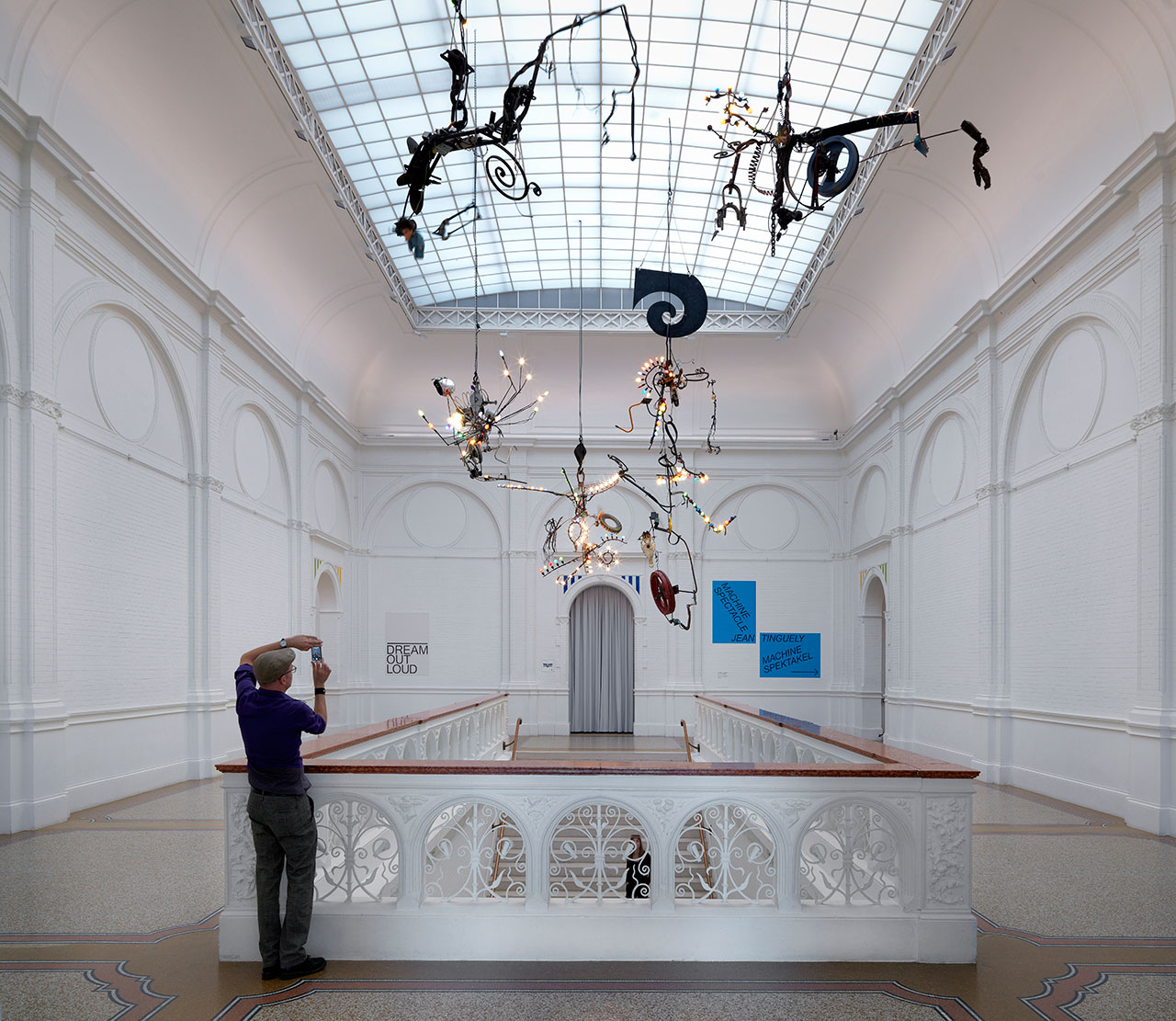
Schnudernase, 1988, coll. Weishaupt, Kyoto Lamp 4 and 10, 1987-89, Museum Tinguely Basel, Die Sonne, 1990, Schmelas Geist, 1983-84, private collection. Photo by Gert Jan van Rooij.

Jean Tinguely and Niki de Saint Phalle, Le Cyclop - La Tête, 1970. Collection Museum Tinguely Basel - a cultural commitment of Roche, donation Niki de Saint Phalle. Photo: Christian Baur, c/o Pictoright Amsterdam, 2016.

Jean Tinguely, Méta-Matic No. 10, 1959. Collection Stedelijk Museum Amsterdam, c/o Pictoright Amsterdam, 2016.
Tinguely’s earlier work borrowed the formal vocabulary of abstract art to create animated versions of abstract paintings by artists such as Malevich, Miró and Klee. Taking this concept one step further, his Métamatics series of kinetic sculptures that produce their own abstract drawings with the participation of the viewers bring into question the role of the artist by literally replacing the artist’s hand with a mechanical arm.
Some of Tinguely’s machines like “Ballet des pauvres” (1961) are made out of junk—in this case salvaged metal and discarded clothing jostling loudly in suspension—whereas others like “Requiem pour une feuille morte”—a monumental piece made up of black wheels and pulleys, 11 meters in length by 3 meters in height, made for the Swiss Pavilion at the World Exposition in Montreal in 1967—belong to a more sleek, streamlined group of black sculptures.
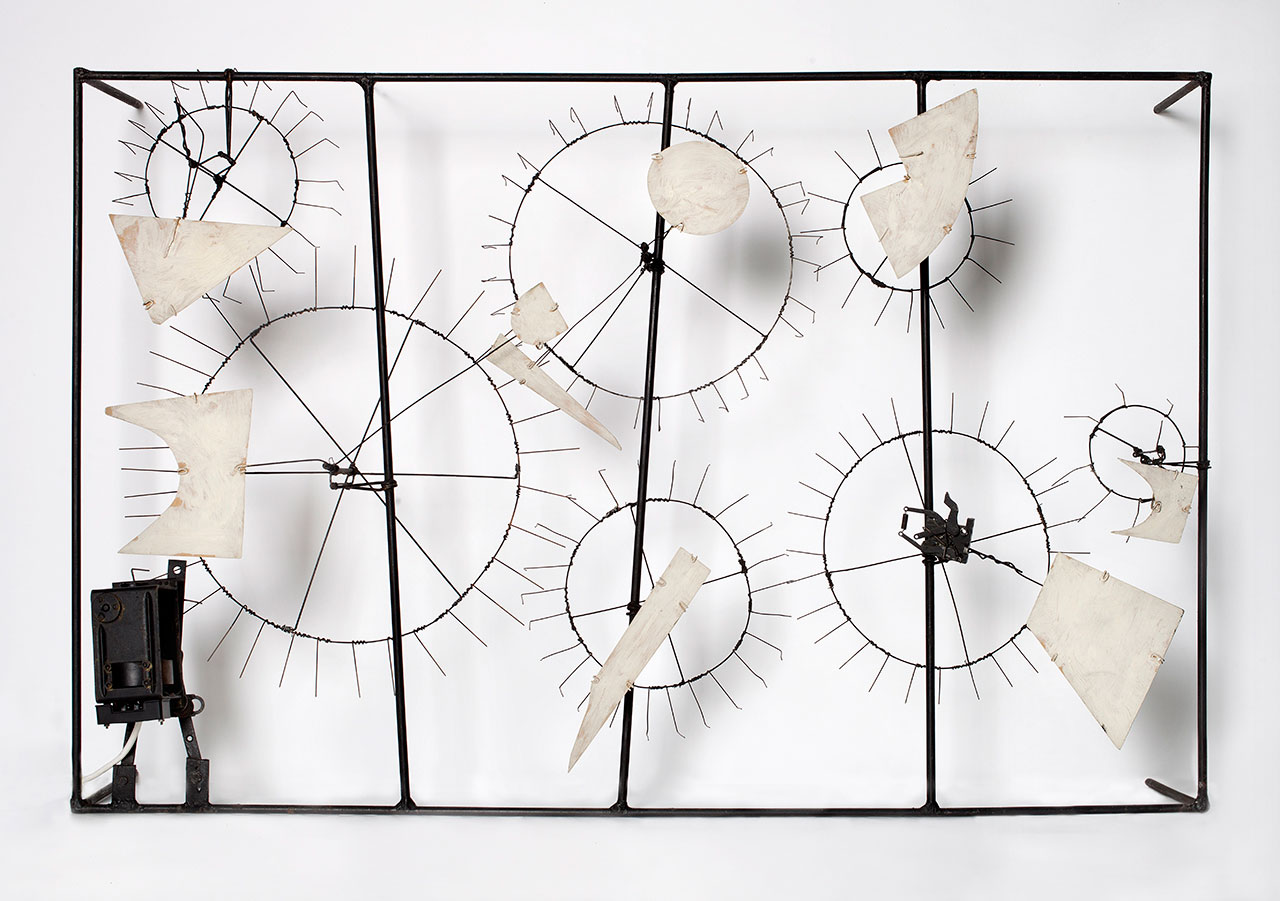
Jean Tinguely, Elément Détaché III, 1954. Collection Stedelijk Museum Amsterdam, c/o Pictoright Amsterdam, 2016.

Jean Tinguely, Meta-mechanical sculpture untitled, 1954. Private Collection Potsdam. Photo: Christian Baur, c/o Pictoright Amsterdam, 2016.

Jean Tinguely, Le Cyclograveur, 1960, coll. Kunsthaus Zurich. Photo by Gert Jan van Rooij.
Whereas his kinetic machines are frozen in a loop of infinite repetitions, his self-destroying sculptures, showcased in the retrospective through images and film, are vehicles of the ephemeral that question the status of the works of art as collectibles and challenge the concept of a static experience of viewing art. Then there are works such as “Study for an End of the World No. 2”, an installation-cum-performance which the artist ceremoniously blew up in front of an audience in the desert outside Las Vegas in 1962, Tinguely treated the viewers to a real spectacle of sparks, smoke and sound, elevating their reaction to his work’s raison d'être.
The exhibition also includes numerous pieces Tinguely co-created with other artists such as Daniel Spoerri, Yves Klein and his wife Niki de Saint Phalle, as well as footage by photographer and filmmaker Ed van den Elsken documenting the two major exhibitions Tinguely curated for the Stedelijk in the early 1960s: “Bewogen Beweging” (1961) and the crowd-pleasing “Dylaby” (1962), a dynamic labyrinth of installations resembling fair attractions by Tinguely and five other artists.
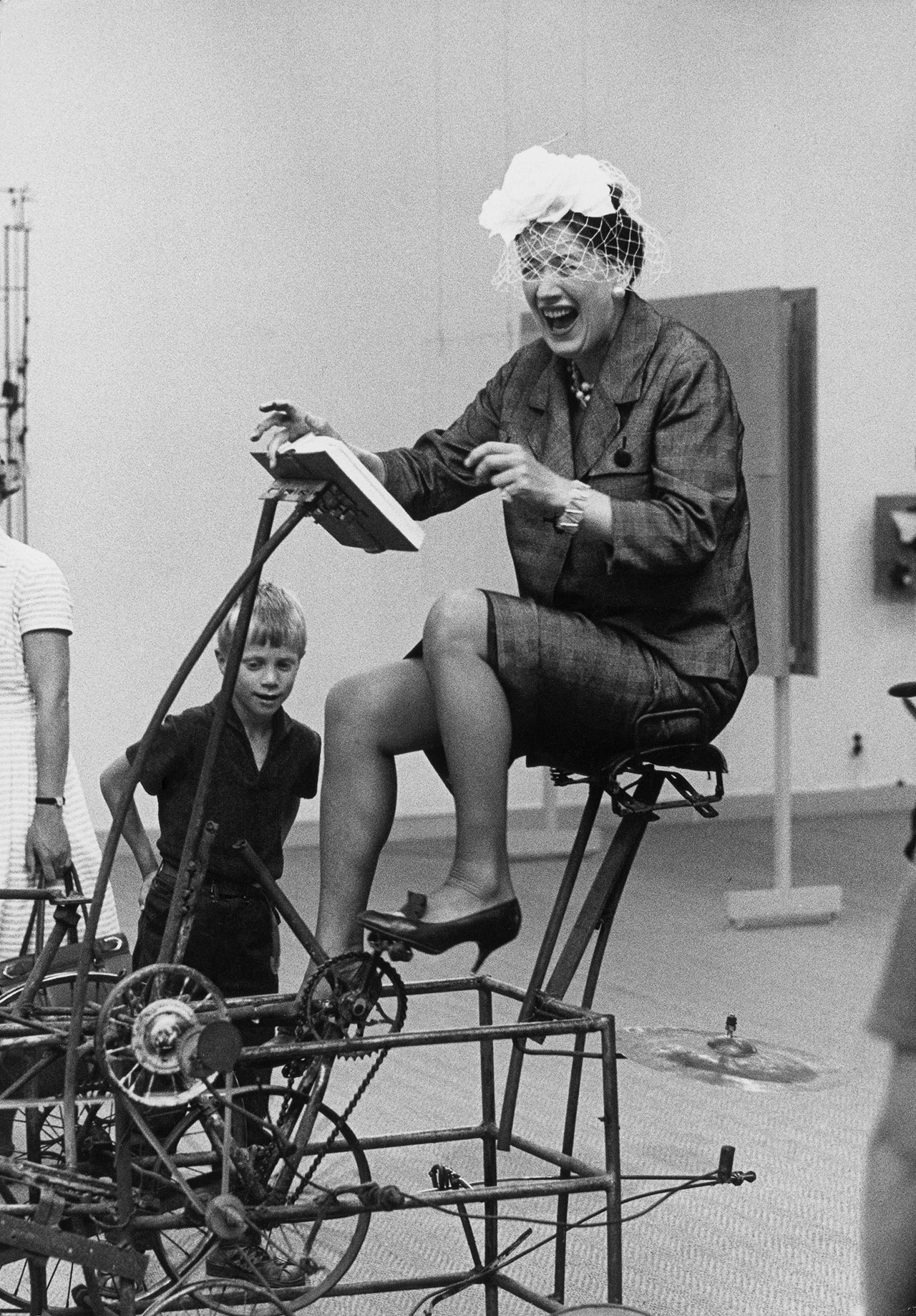
Exhibition Rörelse i konsten in the Moderna Museet, Stockholm, 1961, with Jean Tinguely’s Le Cyclograveur (1960). Photo by Lennart Olson, c/o Pictoright Amsterdam, 2016.
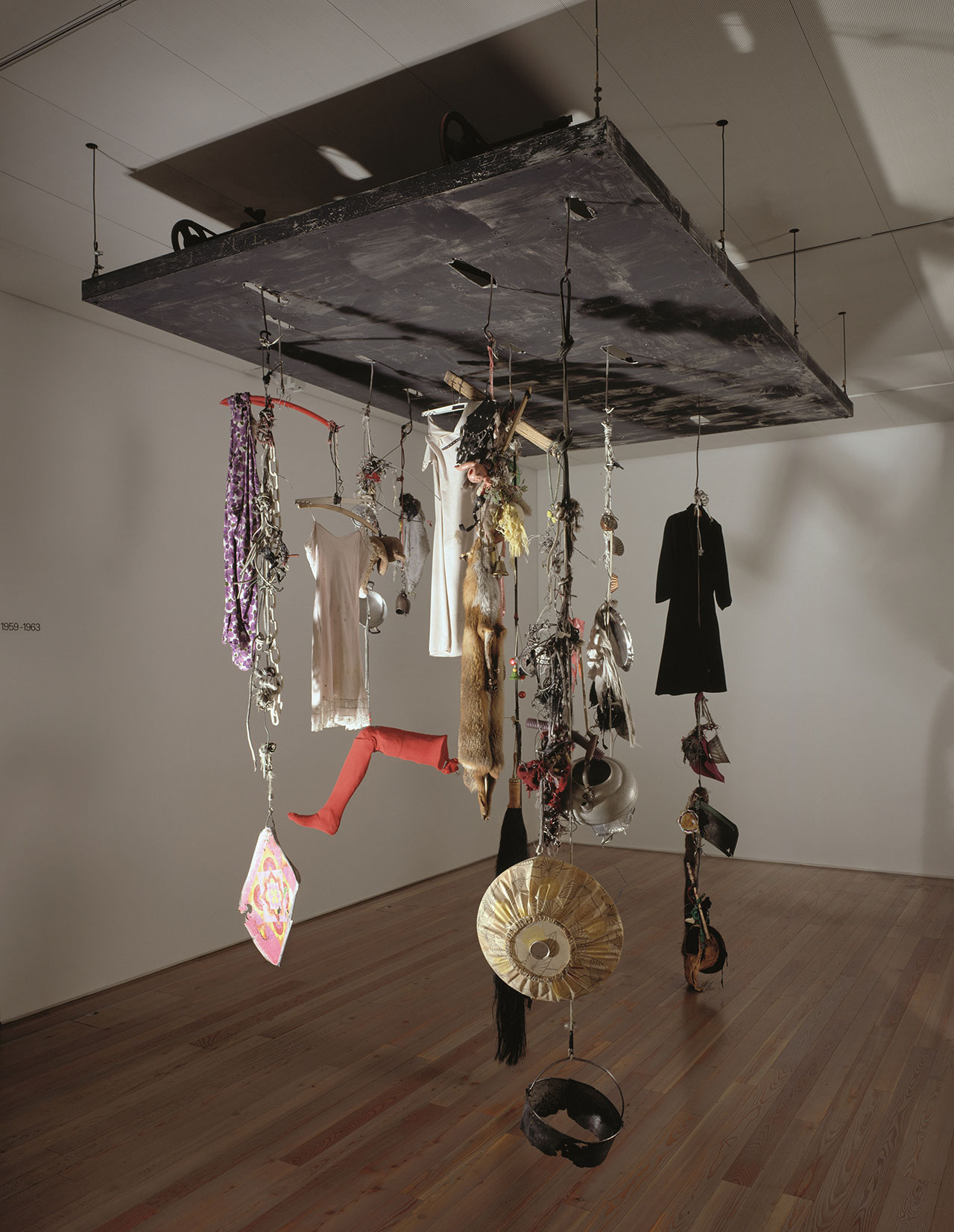
Jean Tinguely, Ballet des pauvres, 1961. Collection Museum Tinguely Basel - a cultural commitment of Roche. Photo by Christian Baur, c/o Pictoright Amsterdam, 2016.

Jean Tinguely, Baluba bleu, 1962. Collection Stedelijk Museum Amsterdam, c/o Pictoright Amsterdam, 2016.
In the mid-80s, Tinguely suffered a heart attack and his later work—the grandest of which, “Mengele-Totentanz” (1986), fittingly closes the exhibition—is permeated by a sense of morbidity. Named after the infamous Nazi doctor and made out of debris the artist salvaged from a neighboring farmhouse in Neyruz, Switzerland, when it burnt down after being struck by lightning—perhaps an eerie parallel to him being struck down by a heart attack—as well as other grim pieces like a hippopotamus skull, the installation is a series of 14 moving sculptures representing a demon and his acolytes performing a macabre choreography of hissing and cranking while casting ominous shadows on the walls of the darkened exhibition space.
Interestingly, during the same period Tinguely also created a series of cheerful chandeliers, part moving machines - part lighting fixtures, which hang in the Museum’s central stairwell, poetically rounding up an artist’s work that celebrated the playfulness and absurdity of life until the very end.

Jean Tinguely, Mengele-Totentanz (Hoch-Altar) with the four acolytes Bischof, Gemütlichkeit, Schnapsflasche and Television, 1986. Collection Museum Tinguely Basel - a cultural commitment of Roche. Photo by Christian Baur, c/o Pictoright Amsterdam, 2016.

Jean Tinguely, Mengele-Totentanz, 1986, coll. Museum Tinguely Basel. Photo by Gert Jan van Rooij.
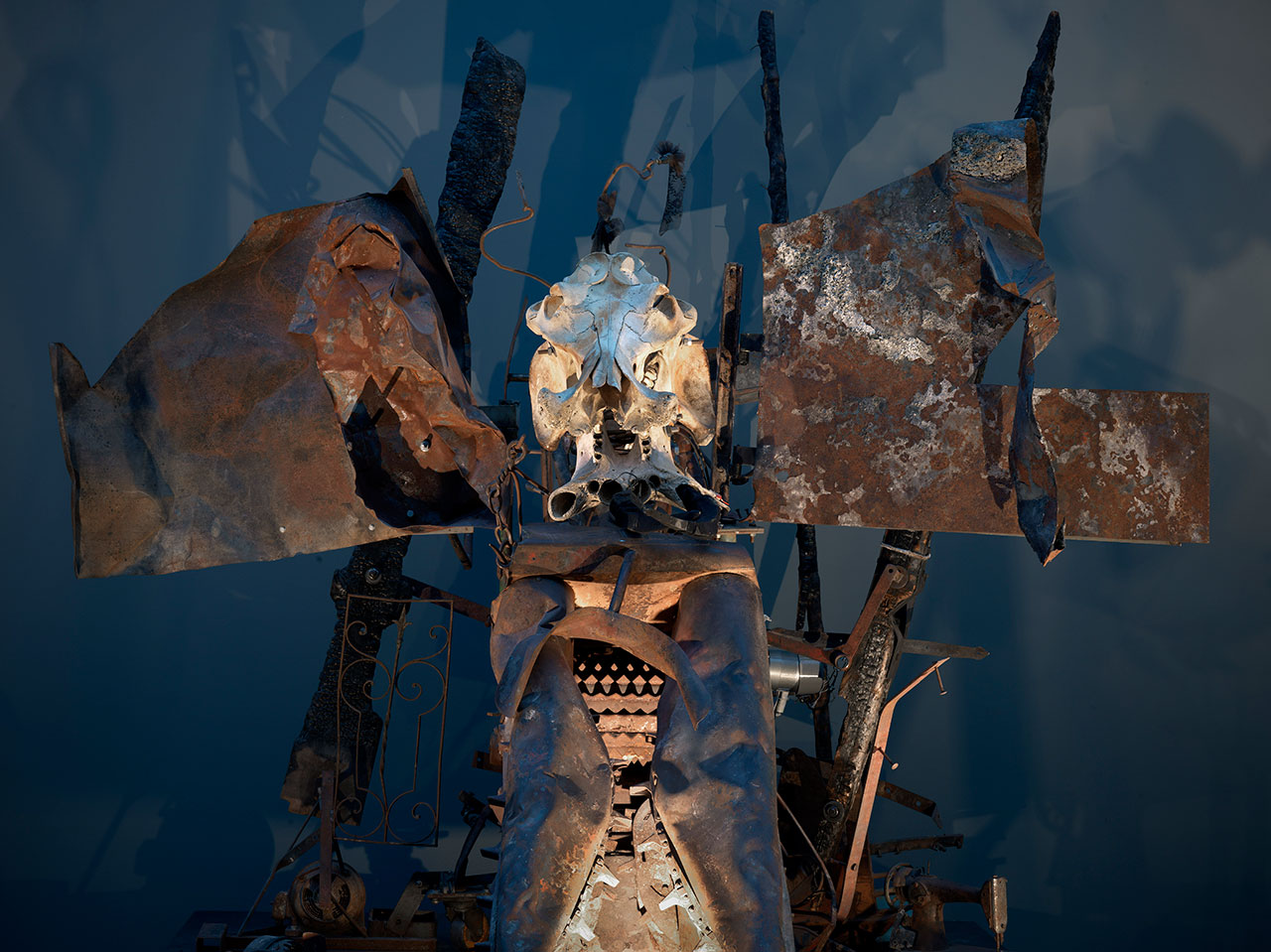
Jean Tinguely, Mengele-Totentanz, 1986, detail, coll. Museum Tinguely Basel. Photo by Gert Jan van Rooij.
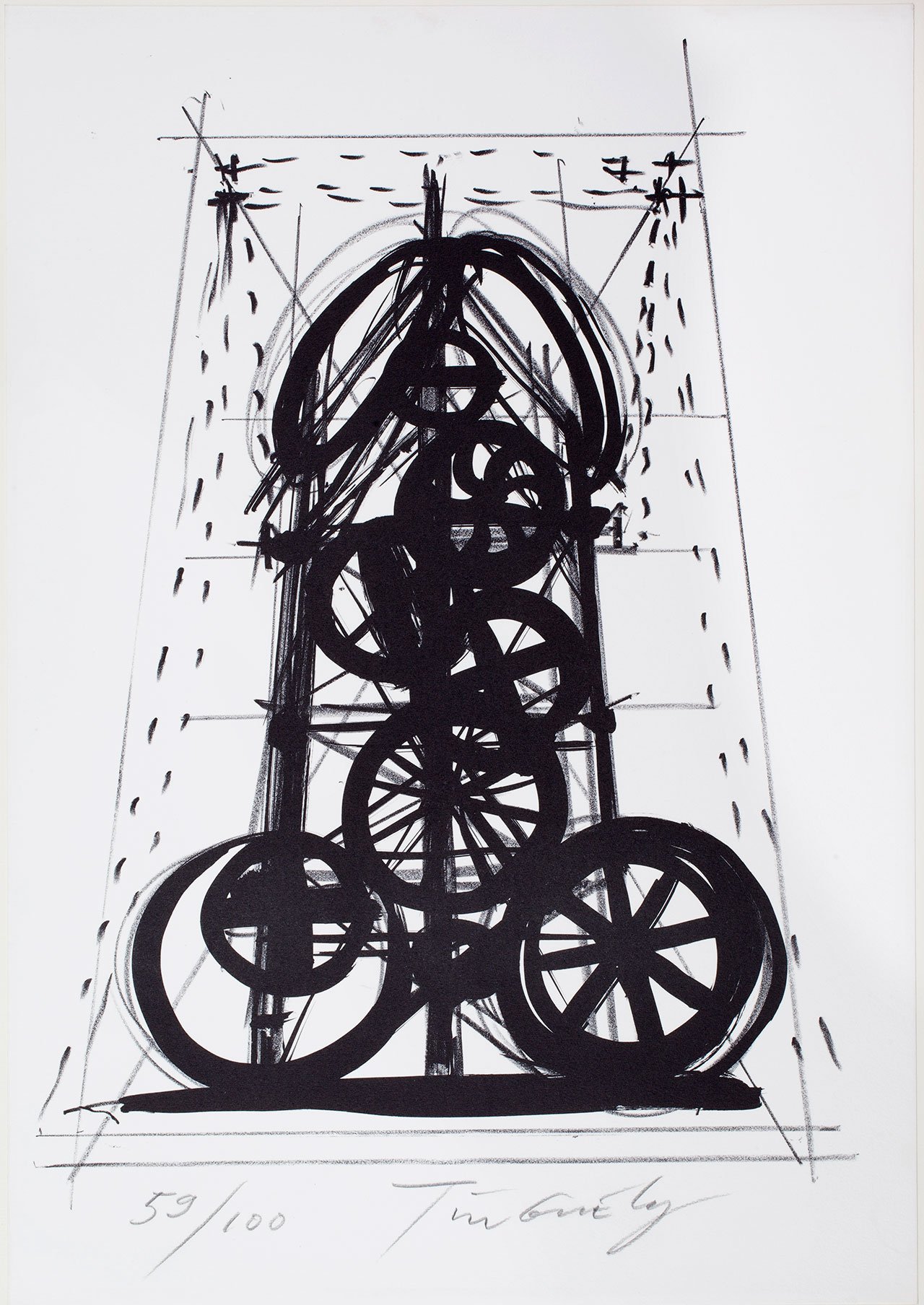
Jean Tinguely, page from the portfolio La Vittoria of Sergio Tosi (59/100), 1970 – 1972. Collection Stedelijk Museum Amsterdam, c/o Pictoright Amsterdam, 2016.
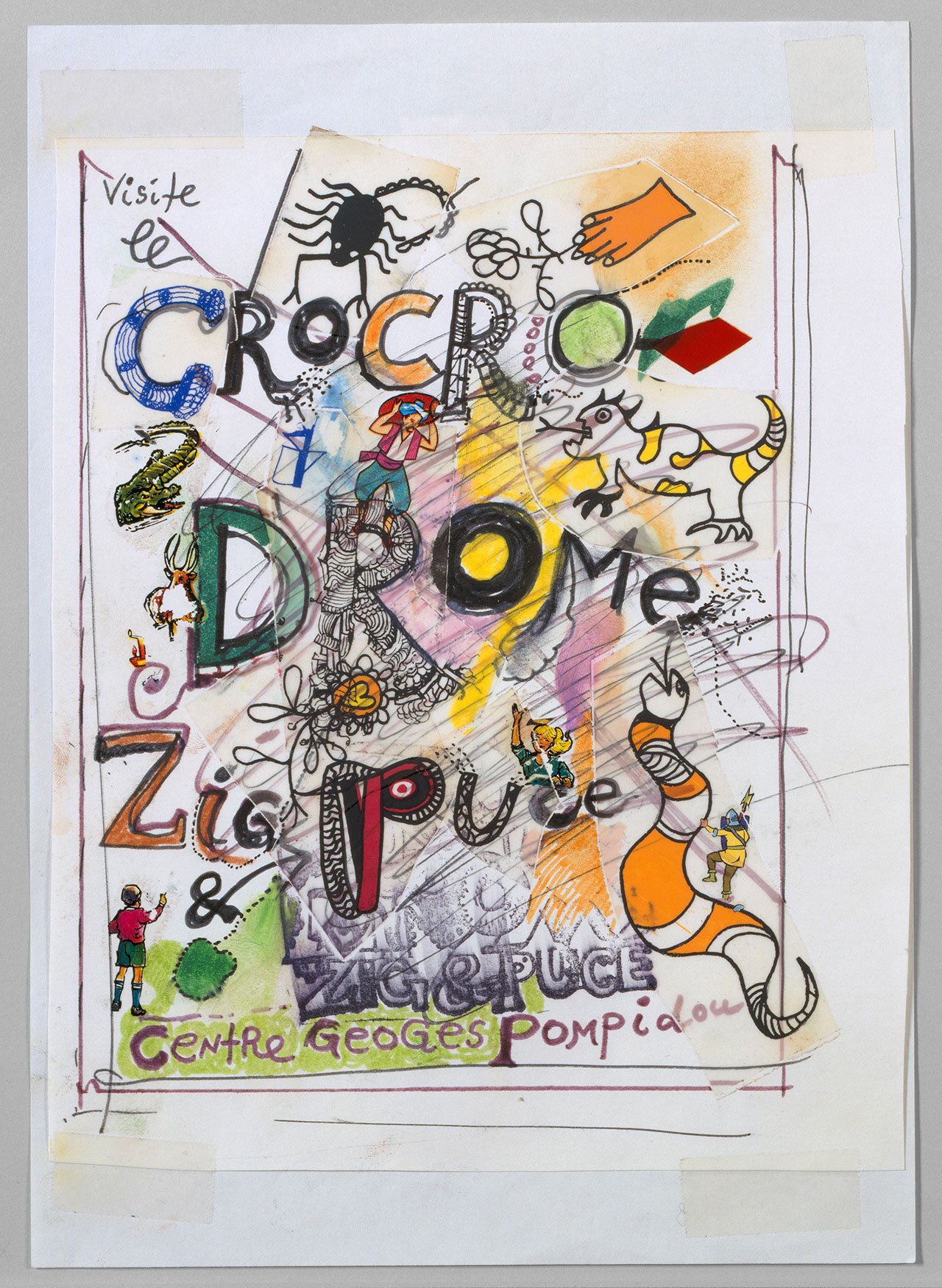
Jean Tinguely, poster design for Visite le Crocrodrome - Zig & Puce, Centre Georges Pompidou, Paris, 1977. Collection Museum Tinguely Basel - a cultural commitment of Roche, c/o Pictoright Amsterdam, 2016.
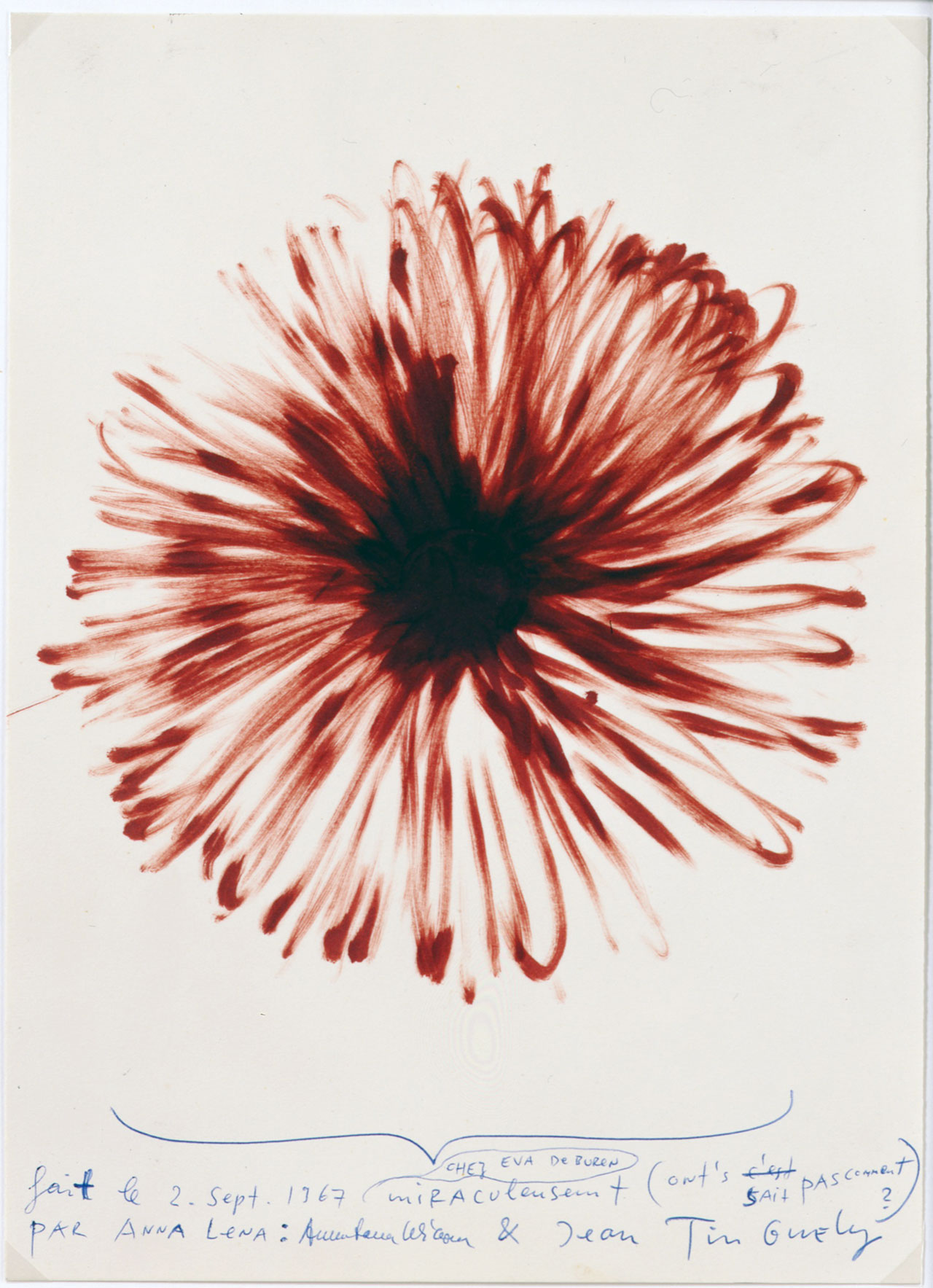
Drawing produced by a Méta-Matic, signed by Jean Tinguely, September 2, 1967. Collection Museum Tinguely Basel - a cultural commitment of Roche, c/o Pictoright Amsterdam, 2016.
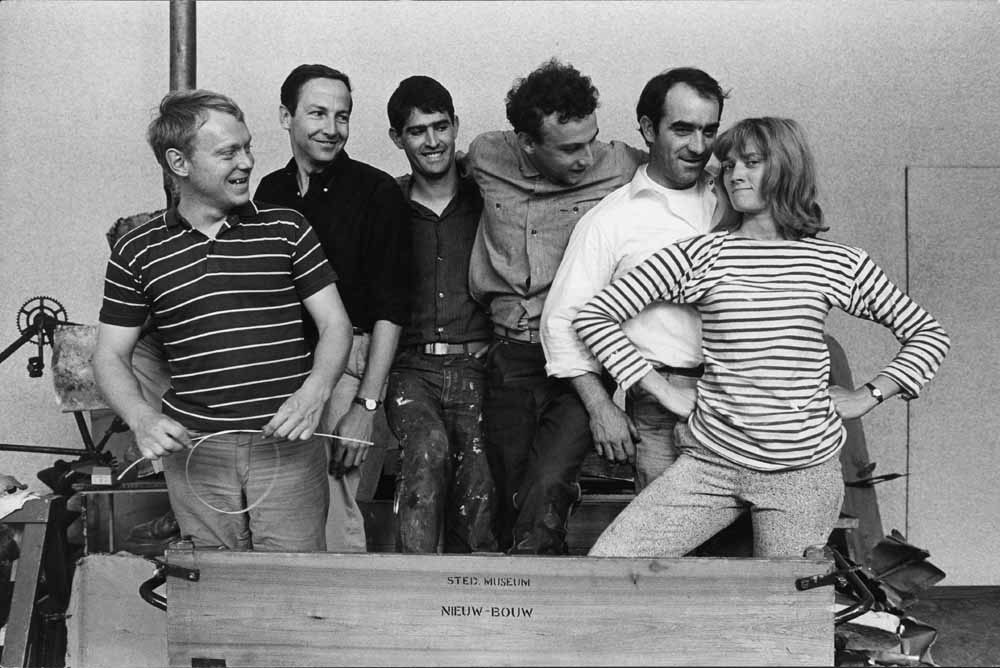
The artists of Dylaby: Per Olof Ultvedt, Robert Rauschenberg, Martial Raysse, Daniel Spoerri, Jean Tinguely and Niki de Saint Phalle, Stedelijk Museum, Amsterdam, 1962. © Christer Christian | Strömholm Estate.

Jean Tinguely with Moulin, 1963, © Museum Tinguely, Basel. Photo by Monique Jacot.
















